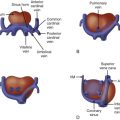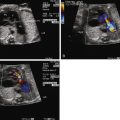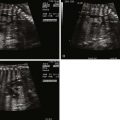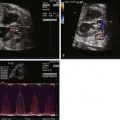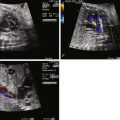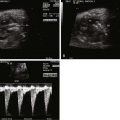The process of counseling families carrying a fetus with congenital heart disease (CHD) is perhaps one of the most difficult and challenging tasks professionals in the field of fetal medicine are asked to perform. The synthesis of complex bits of information into a logical diagnosis that medical caretakers can understand and act upon is one thing. Conveying that information in a cogent, comprehensible manner and explaining the options for a plan of action to a patient and family is quite another.
Whereas resources are available for the professional to learn how to interpret ultrasound images and understand the science and pathophysiology of fetal cardiovascular disease, there is very little guidance on how to effectively speak to families, convey findings, and “counsel.” The term “counseling” itself has an interesting connotation in that the presumption is that simple, straightforward conveyance of factual information is insufficient, which is true. Rather, an interpretation of the facts must be made and the essence of the meaning of the data then transmitted, with advice as to how to proceed. This, of course, makes sense because families cannot be expected to understand, on their own, the meaning of the medical information discovered at evaluation. Very few families will understand the implications of a particular structural anomaly or an abnormal Doppler flow pattern without a careful and thoughtful explanation with overall context provided by a healthcare professional.
This all becomes very challenging when one adds to the mix the extremely high level of stress and anxiety created by the situation at hand. Pregnancy and gestation is all about anticipation and hope. From the moment the news of pregnancy arrives, families begin their process of imagining what the future will bring. From delivery, to baby care, to child rearing and beyond, thoughts and actions are focused on preparation for a new life. Months of mental preparation pass before the actual arrival of the infant. This allows for the development of a cognitive model of expectations that becomes fixed in the minds of parents to be. The disruptive impact following the diagnosis of a fetal anomaly can be psychologically shattering with a myriad of overpowering thoughts rushing forward. One common immediate reaction is grief at the loss of the envisioned future. Emotions flood forward, blocking cognitive faculties at a time when complex material is being presented. Questions—such as How can this happen to me? Why did this happen to me? What did I do to bring this about?—can intrude, clouding the mind of anyone trying to listen and understand what is being transmitted. The combination of emotional charge on the part of the patient with the need to convey complex information on the part of the professional makes for a challenging encounter, with implications toward effective decision making.
The ideal goals of fetal counseling are to have the patient and family leave the encounter with (1) a complete understanding of the ultrasound findings, (2) a full comprehension of the implications for perinatal and postnatal care, (3) a sound sense of the prognosis, both short and long term, (4) an understanding of all management strategies and options that are available, and (5) a balanced, healthy mental state on the part of the patient, with appropriate expectations for care and outcome. Admittedly, it is rare that all of these goals are achieved at the initial visit or, at times, at all.
How can the medical professional achieve at least some, if not all, of these goals? In the next few paragraphs, the authors would like to describe what they believe to be the principles and essentials of prenatal counseling. We must admit, that we do so with an element of trepidation, because we have found this to be one of the most personal experiences to be shared between a medical professional and her or his patient. Each of us has our own subjective method and technique, and we suspect that there are a number of different correct ways to do this. Some readers may take issue with the suggestions and recommendations we are about to make. Perhaps there are other notions as to how to best achieve the goals or one may completely disagree with our views on the goals to be achieved. Nevertheless, there is a surprising paucity of literature on this subject and very few suggested guidelines as to how to go about performing this incredibly important, but daunting, task. After providing prenatal counseling to hundreds of families carrying a fetus with complex cardiovascular disease, we venture an attempt at tackling this issue. Here is what we have learned.
Principles of Prenatal Counseling for Fetal Cardiovascular Disease
The Setting
For pediatric cardiologists, most fetal echocardiography takes place within the confines of a pediatric echocardiography laboratory. This, unfortunately, can be a suboptimal environment for prenatal care and counseling. For the family about to receive important news concerning their unborn child, an evaluation within the setting of other infants and children awaiting an echocardiogram can be awkward and uncomfortable. Because the prenatal counseling session about to occur may focus on alteration of expectations, watching other children playing in a waiting room may further reinforce false expectations and hopes. It may also cause unnecessary stress to families to see other children when their own pregnancy may not result in such an outcome. Perinatologists and maternal-fetal specialists are better equipped from this perspective; however, some pediatric cardiologists and specialized “fetal centers” have remedied this problem by creating a separate location and setting for prenatal assessment and counseling.
A dedicated, separate area for fetal echocardiography and prenatal counseling is optimal. The waiting room design and environs should be adult oriented with appropriate reading materials and literature concerning pregnancy available. Counseling should take place right after the imaging evaluation but, in our view, should not take place in the same room as the ultrasound examination. The scenario of the physician entering the ultrasound room with the patient lying on the examination table still covered in ultrasound gel and proceeding to immediately discuss the findings is one to be avoided. Such action can create a sense of “physician dominance” over the patient, is unnecessary, and can be the setup for an inappropriate social dynamic that may impede the free flow of questions. Ideally, one should allow the study to be completed and have the patient clean up and use the lavatory if necessary. A separate, quiet room should be assigned for prenatal counseling. The patient may have additional family members in the waiting area who may wish to join her at the counseling session. Ideally, all parties should be seated at a round table, with all members at equal eye level. This provides an open and inviting environment for discussion and verbal exchange. Although this may all seem somewhat mundane, we believe that the subtleties of such psychodynamics play a key role in achieving the prenatal counseling goals listed previously.
The Personnel
Medical staff entering a counseling session may include the echocardiogram-interpreting attending physician and supportive staff such as a nurse or social worker. At our center, we have established as our standard protocol that a physician and a dedicated fetal heart nurse coordinator are at attendance at every patient counseling session. In this manner, the patient creates a bond with two members of the prenatal counseling team—a physician and a nurse. This truly broadens the scope of care and advice that can be provided. We have discovered that there are certain inquiries that are made to a nurse that would otherwise not typically be raised with the physician, regardless of the gender of either. There should also be sensitivity to the fact that the overall number of staff members entering a counseling session may need to be limited. Because many of these activities take place within the setting of a teaching hospital, trainees will oftentimes be included in prenatal counseling sessions. Each member of the counseling team should identify themselves; patient wishes should be respected if there is a desire not to include trainees in the counseling session. In our experience, it is the rare family that will complain about the presence of trainees but, if so, this request should be respected. Also, one should be aware of the “us versus them” psychodynamic that can be created if there are too many staff in attendance relative to the patient and her family. Hence, the number of staff assigned to participate should be judged and decided upon before entry into the counseling session.
The sonography staff are part of the team offering overall services to the patient. At times, an anxious patient will directly question the sonographer during the fetal echocardiogram as to the findings and their implications. Our sonographers are specifically trained to provide a supportive encounter with words of encouragement, but to limit the reporting of specific findings directly to the patient. The sonographers will reassure families that all of the information will be provided at the counseling session and all questions answered at that time, with the counseling team placing the echocardiogram findings within the context of the history and other medical information. Most families, although perhaps still anxious, will be satisfied with this approach.
The Discussion
The person leading the discussion, let us call him or her the “counselor,” must convey both confidence and honesty throughout the session. The discussion must not be rushed, with ample time allowed for questions and answers. We typically expect that prenatal counseling for newly diagnosed heart disease will take approximately 1 hour. Follow-up visits are variable in the time spent. Factors that contribute to the quantity of time expenditure in counseling relate to the complexity of the heart disease as well as patient-/family-related variables such as maternal temperament, level of stress, psychological state, and cognitive capacity. Here are some tips and pointers:
- •
Start the conversation through introductions. Describe the role of the various staff (e.g., nurse, social worker). We will frequently begin by asking the patient how she learned about the possibility of the presence of a “birth defect of the heart.” This allows for a review of the current knowledge to date about the pregnancy, a review of the referring physician’s findings, and what impressions have been conveyed, that is, What is the patient’s understanding of the problem?
- •
Following this introduction, state and confirm that there is a problem with the fetal heart. Outline to the patient/family what you are about to do. Typically, we tell them that we will discuss what the normal fetal heart looks like, describe how the fetal heart differs from normal, and what the implications are for the pregnancy, delivery, neonatal care, and beyond ( Box 6-1 ).
Box 6-1
A Step-by-Step Listing of Important Elements to Include in the Family Counseling Session after a Prenatal Diagnosis of Heart Disease
- 1
Introduction of team members.
- 2
Dialogue with the patient as to how she learned of the suspicion of an anomaly, with review of history of present pregnancy, family history of CHD, risk factors, and other issues.
- 3
State to the family that the fetal echocardiography confirms the presence of an anomaly.
- 4
Outline what will come next in the counseling, so as to provide a sense of structure (e.g., say “I will discuss the normal heart, how your fetus’s heart differs, and what the implications are for the pregnancy and beyond in the next few minutes—please stop me if there is something I have said that you do not understand, in addition I will stop for questions along the way”).
- 5
Describe and demonstrate the normal heart.
- 6
Describe and demonstrate how the patient’s fetal heart differs from the normal heart from an anatomical and physiological perspective.
- 7
Discuss the implications of the fetal diagnosis for the remainder of the pregnancy (e.g., frequency of visitations, additional testing necessary such as amniocentesis or further obstetrical imaging).
- 8
Discuss the impact upon the delivery (e.g., mode of delivery, additional monitoring that may be necessary).
- 9
Discuss the implications for neonatal care (what type of care will be necessary and where that care should offered, e.g., specialized facility, neonatal intensive care unit, cardiac intensive care unit).
- 10
Discuss therapeutic options including medical treatment, surgery, and the time course and complexity of treatment.
- 11
Discuss anticipated prognosis, short and long term.
- 12
Discuss the option of termination of pregnancy with clear articulation of time limits (as appropriate, based on legal regulatory limits and gestational age).
- 1
- •
During the discussion, be honest and do not “sugar coat” the data. It is hard to convey bad news, but it is our job as professionals to do so in as clear and sensitive a manner as possible. As in all things, experience and practice will help. Prenatal counseling is a skill that improves with time.
- •
If the diagnosis is certain, be firm and say so. If it is not and there are still unknowns, admit this as well and describe to what degree the unknowns may affect overall management and prognosis.
- •
Describe the ultrasound findings and how they contribute to the diagnosis. Write down the actual name of the diagnosis, because this may help families as they seek additional information through other resources such as the internet/web or a library.
- •
Describe the implications of the diagnosis for the remainder of the pregnancy and any potential impact toward mother’s health, if appropriate.
- •
Describe the management options for prenatal and postnatal care.
- •
Describe the prognosis and outcome, based on knowledge of the most recent contemporary outcomes for medical or surgical care for the anomaly or disease at hand. This, therefore, requires an up-to-date knowledge of current strategies and outcomes for CHD (hopefully something this book and other resources will help you to achieve!).
- •
Some families exhibit immediate sudden outbursts of emotion such as fear or extreme sadness. Crying is common and to be expected. Other families exhibit frustration through anger or rage. It is critically important to create an air of respect and dignity for the patient and their predicament, regardless of who they are or their reaction to the information you are conveying. Families will commonly apologize after such outbursts.
- •
Use ample print materials—figures, illustrations, and diagrams—to help explain, first, the normal anatomy, and then, the abnormal findings. Allow time for the family to digest and comprehend the differences in the structure between the normal and the abnormal. A side-by-side comparison of anatomy can help. The use of figures portrayed on a computer screen or drawn on a board can also be helpful and illustrative at the time of counseling; however, these are limited by the inability of the family to take these educational aids home for further study and review.
- •
Explain, explain, and explain—but stop intermittently to allow for questions and ask the family if they understand. One technique is to ask the family to repeat what they have just learned and to explain back to you in their own words what they have heard, if there is suspicion of a poor understanding of the material.
- •
Judge when enough is enough . . . it can become a huge challenge for some families to absorb dense blocks of data once given the initial shock of the diagnosis. The counselor must develop skills in reading facial cues and body language. Sometimes a quick summary and essential aspects of diagnosis and prognosis are all that the patient and family will allow. For example, discussing the physiological benefits of volume unloading at the second stage of surgical palliation for hypoplastic left heart syndrome when it is evident that the patient is about to erupt into an emotional outburst or fit of crying does not serve any purpose. It is unlikely that such a patient is truly going to absorb what has been explained, and as counselors, we need to be able to read patient/family responses to the counseling content conveyed.
- •
Occasionally, a break is needed for a “time out.” Such a break can benefit both patient and counselor and should be used as a moment to regroup and gather thoughts on all ends. At times, bits and pieces of information need to be doled out in packages, with full details reserved for subsequent counseling sessions.
- •
Provide the option for additional future counseling sessions, either with other family members to be invited or simply to hear things through for a second time. Such a session may need to be scheduled relatively soon after the initial encounter.
- •
Provide contact information for the family to call, or email if the practice will allow, following the initial session. In our fetal heart program, the assigned nurse coordinator functions as an easily accessible liaison to the patient and can answer most questions or direct them to the attending physician as needed.
- •
Make it clear that follow-up evaluations and counseling sessions are anticipated. These serve the purpose of monitoring for anatomical or physiological changes that can occur in the fetus and allow opportunities for continued family education and counseling. Families will frequently come back at follow-up visits with good questions based on a prior counseling session. Gaps in knowledge can be easily ascertained with more focused and attentive counseling offered at these follow-up sessions. We typically see patients with fetal cardiovascular disease at 4-week intervals from time of initial evaluation until point of delivery, with the intent of providing further counseling and education at each and every encounter.
The Hardest of Talks: The Option of Pregnancy Termination
Each and every patient should be made aware of her option to choose termination of pregnancy, based on legal limits as determined by state and local authorities. In most regions of the United States today, termination of pregnancy is possible up to, but no later than, 24 weeks of gestation. Being made aware of the option of termination and its legal limits is the right of every patient and the obligation of the counselor to convey to the patient. Actively advising and suggesting to patients to choose termination is an action we do not believe is within the purview of the prenatal counselor, regardless of the severity of the disease. For example, in cases of severe fetal disease for which no reasonable successful treatment options are available (e.g., trisomy 18 with complex heart disease, conjoined twins with a single heart amalgam, or single-ventricle type CHD with large diaphragmatic hernia), the task of the counselor is to convey as effectively as possible the potential futility of pursuing treatment. If the family declines the option of pregnancy termination after careful time spent in describing the situation and after acquiring an honest sense that the family understands the prognosis, non-intervention at birth is another possible option to be pursued.
We believe it is our task to provide as much information as possible to the family in order to help them come to their own conclusions and to make the right decision for themselves. Criticizing families for expressing interest in termination or intentionally not discussing this option in pregnancies under 24 weeks’ gestation is inappropriate. As caretakers and practitioners, we all bring our own opinions, experiences, and life views to the counseling table; however, one should resist the urge to project our own personal beliefs or values, be they cultural, political, or religious, onto our patients. Once a decision toward termination or continuation of pregnancy is made, we convey support for that decision because it is the right one for the family.
Doctor, what would you do? This is a commonly asked question and can be handled in a number of different ways. One should respond honestly and state clearly that one patient’s choice may not be appropriate for another patient, because so many variables enter into the decision of whether to continue a pregnancy or to terminate. As a physician or nurse, our conditions may be vastly different than that of the family being counseled, and this factor should be explained to the patient and family. Hence, the physician’s or nurse’s personal decision in relation to a particular case as to “what we would do” may not be applicable to other families in whom conditions will almost always vary to some degree. In general, caretakers need to avoid the hubris of thinking that they “know best” and avoid a paternalistic or maternalistic approach. Although it can be a huge challenge, careful explanation of the facts and conveyance of the latest data on prognosis, or in rare and unusual cases, a description of the outcome of similar patients or experiences, can all contribute to families making their own judgments and decisions.
Another common request that arises is a desire on the part of the family to speak with other families who have had similar diagnoses and have gone through the same process of prenatal management and postnatal care. On the surface, this may seem like a good idea; however, it is not something that we strongly encourage for fear of inadvertently creating a bias. Those families willing to share their decisions and their story saga are, by nature, the ones with a successful course and a good outcome. Families for which aggressive care is chosen but outcome is unfortunately poor are naturally less willing to participate in such an encounter. This creates a select group of willing families that may not convey a balanced view. Nevertheless, if families ask, we do facilitate such encounters with the added caveat of explaining the possibility of a biased opinion.
One point we have found to be of value in conveying to families during prenatal counseling is the notion of a “fluid prognosis.” When describing the prognosis for a congenital anomaly or fetal disorder, in particular for long-term outcome, one can discuss how patients are doing at the current point in time, as far out as data can provide. However, families should understand that care and management of cardiovascular disease is improving steadily. Problems that long-term survivors currently face at the time of fetal counseling may have ready solutions 10 to 20 years henceforth. In the same way that 20 years ago, it would be considered “science fiction” to be able to sit with a family and accurately diagnose complex CHD in a fetus at 20 weeks’ gestation, 20 years henceforth, whatever difficulties currently exist for survivors may similarly be more effectively managed and perhaps even resolved. Hope and optimism are integral parts of human nature; when fact based and potentially realistic, these should not be held in reserve when offering prenatal counseling.
Stay updated, free articles. Join our Telegram channel

Full access? Get Clinical Tree


